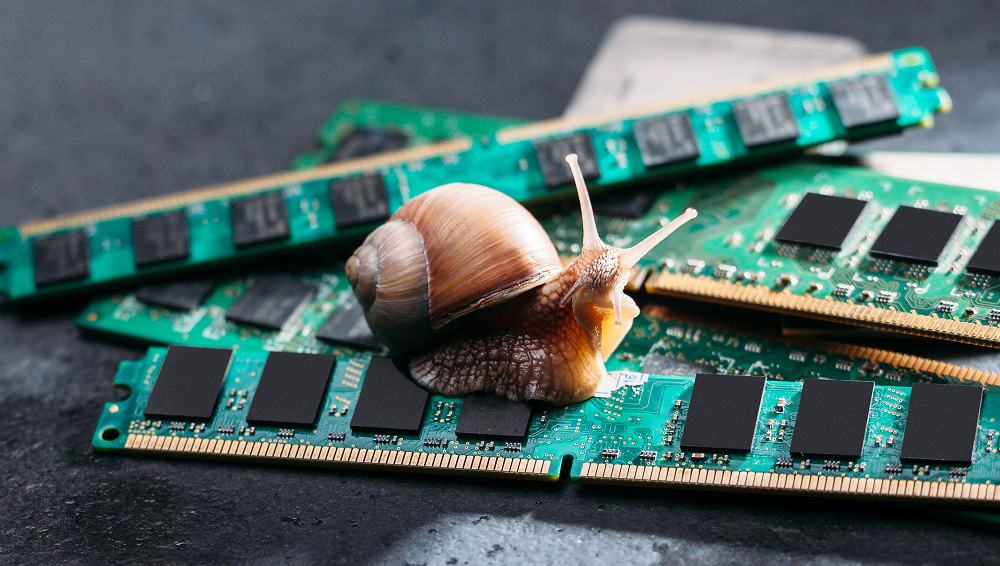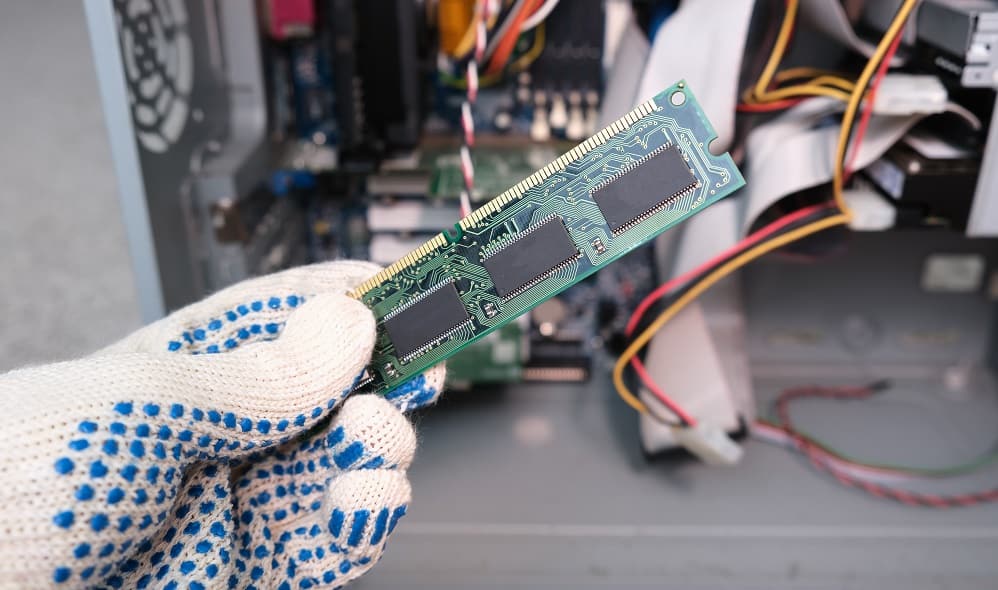Old RAM modules can be re-used in home servers that can perform non-demanding tasks. It can be sold at online marketplaces or donated to charitable institutions. It can be re-purposed as decorative items. Lastly, it can also be sent to an e-waste refinery for WEEE recycling.
This article will explain the various ways to recycle old memory modules, namely: re-using on a home server; re-purposing as a decorative item; selling or donating; and WEEE recycling.
Old RAM Modules

All DDR memory are mutually incompatible. Their sockets feature different notches. The power supply is also different: DDR1 is 2.5v, DDR is 1.8V, DDR3 1.5V, and DDR4 1.2V.
Needless to say, previous iterations of hardware become obsolete and there is no longer a use for them. As of writing this post DDR and DDR2 are obsolete. Most modern motherboards only support DDR4, however DDR3 compatible models do exist.
Truth be told, you are somewhat limited in terms of use as well as being able to recycle them effectively. Here are a few possible options:
Re-using on a Home Server
Without any prospect for selling, old RAM modules can be installed as memory for a home server primarily intended for basic tasks like multimedia playing and running basic applications.
DDR2 and DDR3 memory work fine for older versions of modern applications that do not require much memory and processing power.
Re-Purposing
Old memory modules can also be repurposed into DIY keychains and other decorations. People often choose to repurpose these old memory modules instead of re-using or selling because it is often not worth buying an old computer and because they don't sell for much.
Another benefit of repurposing old memory modules is to prolong its usage. While it may not be used for its intended purpose, its decorative value provides greater satisfaction for some people.
Selling or Donating
Old memory modules can also be donated to charitable institutions who refurbish old computers to donate to people in need. Donating old memory modules is often the better option because these institutions have better connections and a better supply of compatible computer components that can use old memory modules.
RAM modules can also be donated without having to reformat or wipe data unlike hard disk drives as its volatile memory, which means it is wiped clean every time the computer is powered off.
It is also hard to find an interested buyer for old memory modules, even for local computer dealers. Pawnshops may also not be interested in buying old memory modules or may offer to buy them at a very cheap price.
WEEE Recycling

The most viable option of recycling old memory modules is through waste electrical and electronic equipment (WEEE) recycling. WEEE recycling refers to the extraction of primary resources from electrical and electronic components.
Given the fast transition of technology, the rate of WEEE is increasing and becoming one of the fastest waste streams in the world today.
WEEE recycling prevents electrical and electronic components, which often contain toxic chemicals such as lead and mercury, from polluting the environment when it is thrown haphazardly into a landfill. Improper disposal of WEEE not only contributes to environmental pollution but can also be a source of poisoning and other diseases.
Old memory modules are considered as waste from information and telecommunication equipment according to the EU directive on WEEE. It is also classified as a Printed Circuit Board (PCB) and will follow a series of processes for WEEE recycling.
As a PCB-based computer component, old memory modules will undergo removal of copper components through de-soldering. The chips and gold-plated parts will undergo chemical stripping through submerging in hydrochloric acid. The dismantled board will then be subject to open burning to extract the remaining metal components.
WEEE recycling can extract gold, silver, and palladium from old memory modules. The gold component in old RAM modules can be found in the IC chips. Other RAM modules also have gold plated holes which can also be recycled.
E-waste refineries offer a decent price per kilogram of gold gathered in old memory modules. However, not all RAM modules contain the same amount of gold. Usually, the brand and model are good indications of the gold content per kilogram.
RDRAM contains the largest volume at 5g of gold per kilogram. This is followed by DDR2 and DDR3 RAM modules with 3.75g of gold per kilogram. DDR1, or DDR SDRAM, contains the least amount of gold at 1.2g of gold per kilogram.
Selling at e-waste refineries is a good way to recycle old memory modules. They offer the best price when compared with pawning or selling at online marketplaces. It also helps reduce pollution in landfills as well as to promote efficient use of primary resources for manufacturing precious metals, especially gold.
Final Thoughts
Old memory modules have very little use, especially if it is already several generations old like the DDR and DDR2 RAM.
The development of WEEE recycling is currently the best way to recycle these old memory modules. It provides a higher selling price depending on the number of precious metals as well as helps the environment by extracting these precious metals which can then be used to produce new products.

